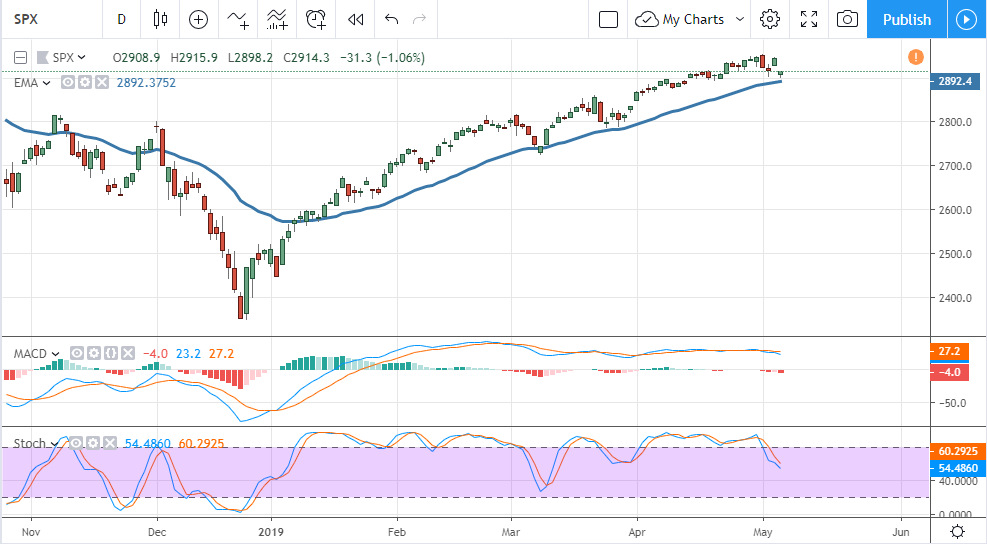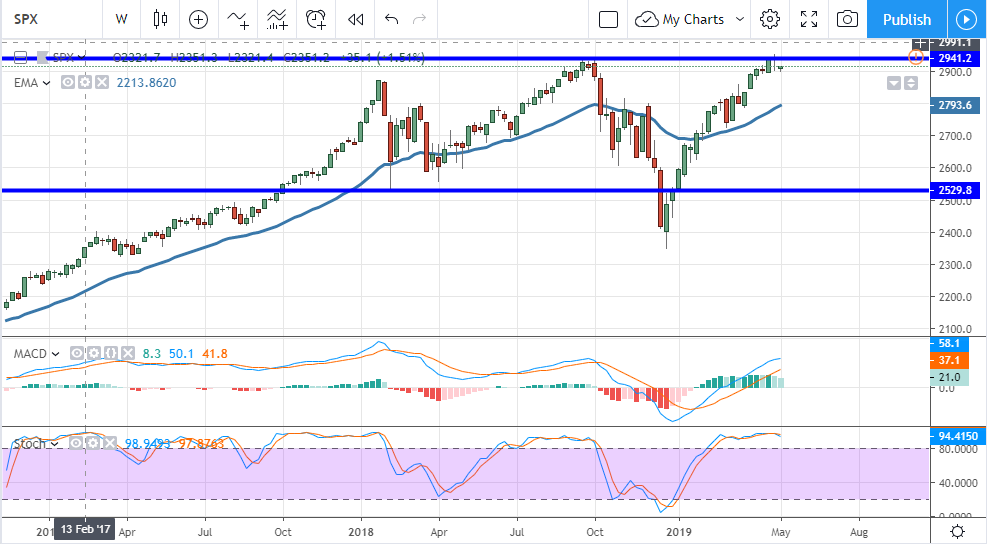Trade Talks Rattle Market, Reversal Is Imminent
Trade Talks Stall, Tariffs To Rise
The U.S./China Trade Talks have stalled. President Trump, in an effort to spur progress, has announced the current 10% tariffs will be increased to 25% on Friday. In addition, he is targeting another $350 billion in Chinese goods and may levy those duties as early as this week. The move in in response to China’s attempt at renegotiating previously agreed-upon items within the deal-in-progress.
China, for its part, says it is surprise by the new threats. Vice Premier Liu He is scheduled to visit Washington this week in what was thought to be the final round of talks. Now, China is considering whether or not to pull out of the talks or continue under the new paradigm. Markets in Asia fell hardest on the news, the Shanghai Composite and Shenzen Composite shedding 5.0% and 7.0% respectively.
The U.S. market did not respond well either. The Dow Jones Industrial Average, NASDAQ Composite, and S&P 500 all fell nearly 2.0% in early premarket trading. The move put the broad market S&P 500 down to the short-term 30-day moving average where it faces a critical decision; bounce higher or break through and move lower. With trade talks in question and no reason now to think a deal is at hand a move lower seems like the most obvious move.
Aiding this move will be poor outlook for future earnings. Earnings growth is expected to resume a positive trajectory later this year but growth will be small. Possibly non-existent if trade talks do indeed fall apart. For now, support appears to be present at 2,900 although you should expect at least a test of support in the near-term. The indicators are both moving lower after diverging from recent highs, an indication of market weakness and potential for price reversal.
A break below the 30-day EMA will likely go to 2,800 in the near-term, if not lower. Longer-term, it is possible we’ll see the index form a much deeper correction, a correction within an even longer-term secular market consolidation, and one that could take the index down to retest lows set last December. The risk is that trade talks will resume, that this latest development is nothing more than a speed bump, and that scenario may result in a surge to new highs.

